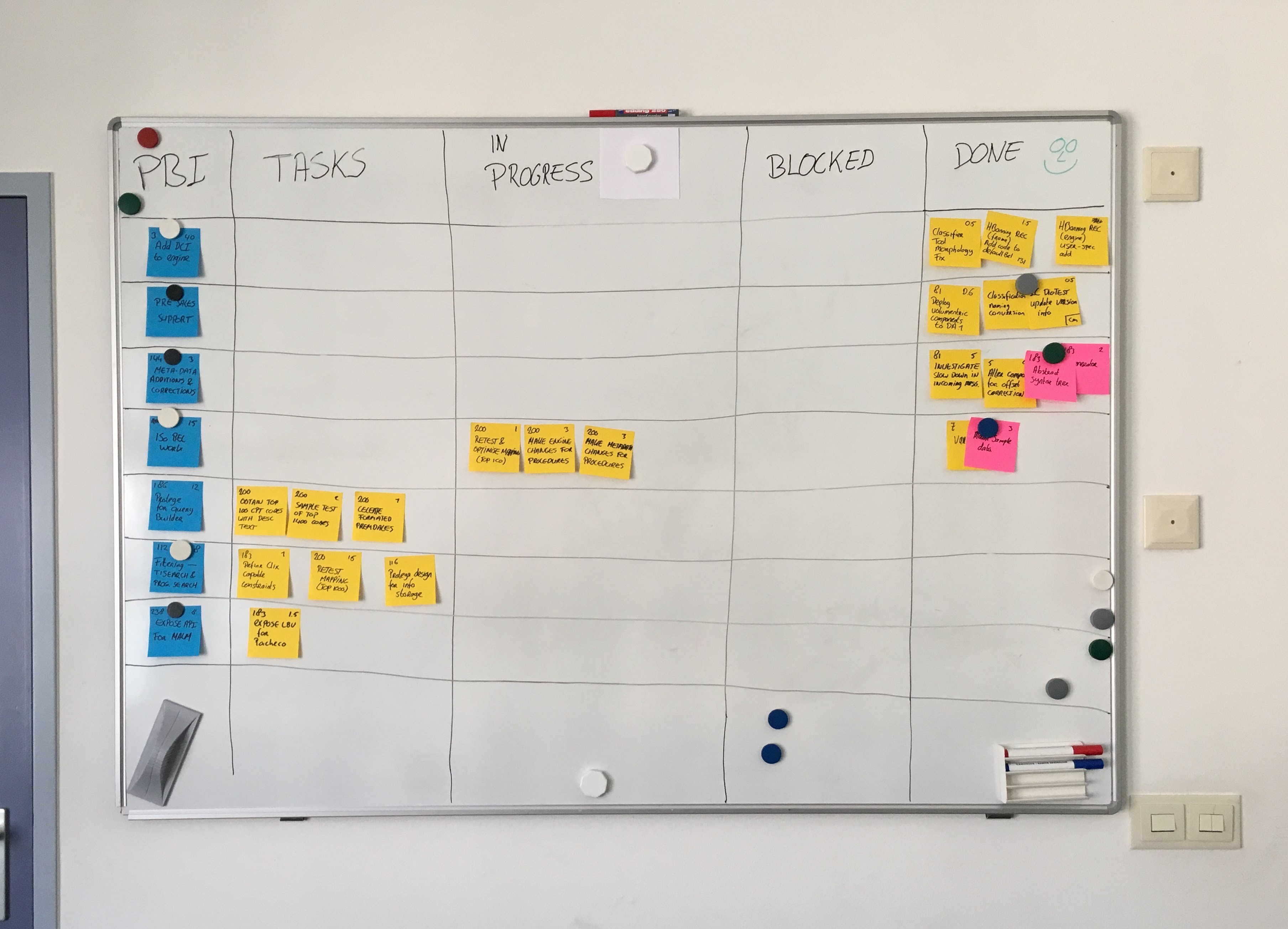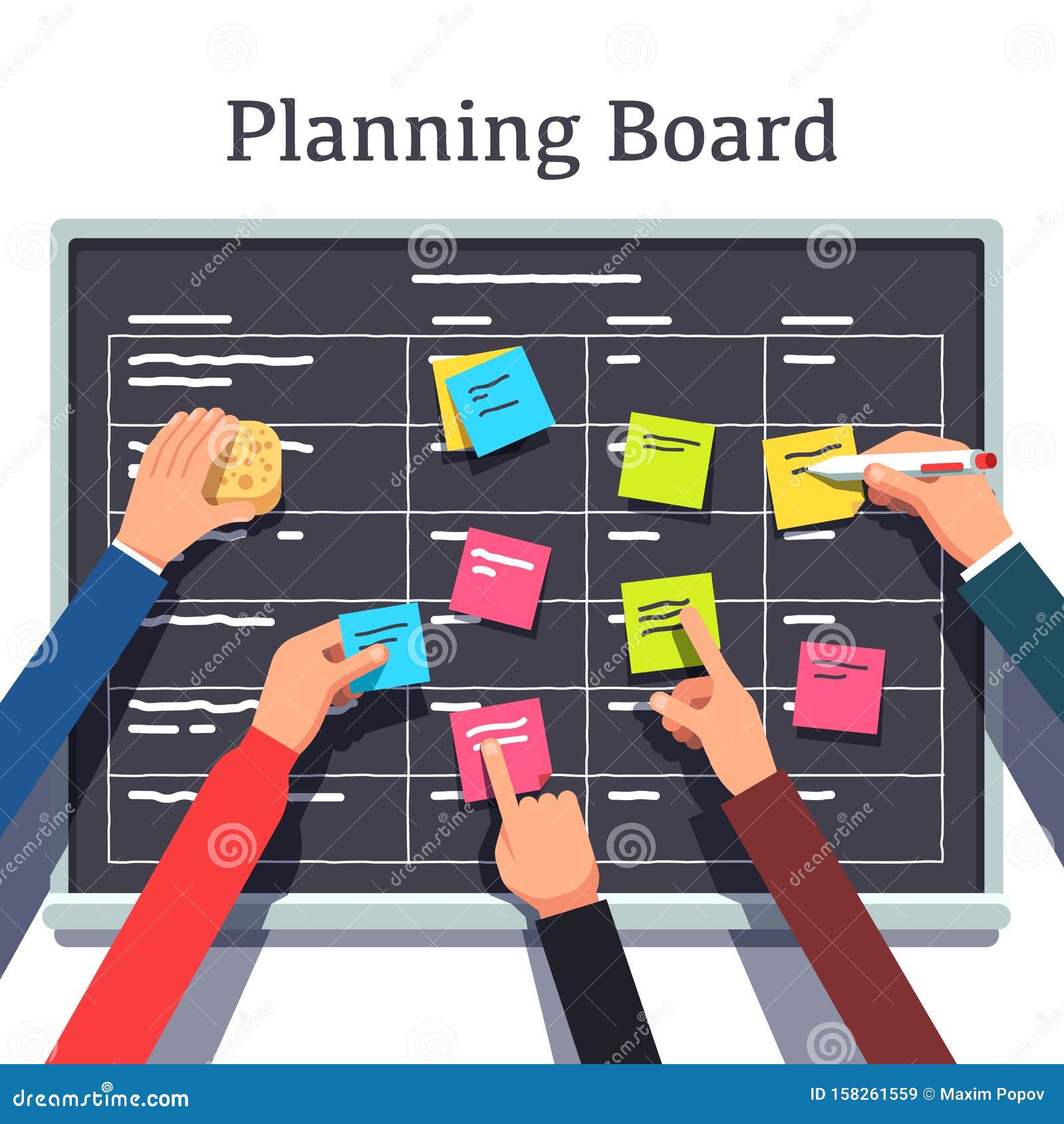

They customize the board into five columns - ‘Story,’ ‘To Do,’ ‘In Progress,’ ‘Testing,’ and ‘Done.’īefore each sprint, the product owner and scrum team decide on which user stories they are committing to work on in the sprint. Because they are following the Scrum framework, the team is using user stories to categorize their agile board. The Scrum Master downloads the Agile Board Template.
#SCRUM TASK BOARD EXAMPLE SOFTWARE#
In this example, the software development team is developing a food delivery app using the Scrum framework. Here’s an example of how a software development team can use an Agile board for project planning and tracking. Common use case of an effective agile board All information will be updated in both tools – no matter where you edit them. Pull issues from Jira onto the Agile Board template to collaborate on them, or turn sticky notes and Miro cards into Jira cards. Add comments, ask questions for clarification, and continuously reflect on your progress. Track progress daily and move sticky notes around the agile board as tasks move through your workflow.ĭon't forget that the board is a point for conversation.

Make sure each team member is aware of what tasks they are responsible for and what each task entails. Fill in the sticky notes with the tasks from your backlog that needs doing. Start the sprint with the sticky notes in the to-do section. Use these swimlanes to categorize tasks into departments, teams, or different work types.
#SCRUM TASK BOARD EXAMPLE FREE#
The template comes with three swimlanes, but feel free to add, remove, or edit these as required. Horizontal lanes help separate and further define your workflow. If your workflow is more complex, add columns as needed. The template starts with three progress columns - ‘To do,’ ‘In progress,’ and ‘Done.’ You can customize the names of each column depending on your workflow. Invite team members via email or Slack, or create a team invite link. Invite your team to the board to plan tasks and track further progress. It’s fully customizable depending on your project, tasks, and team. This premade layout of sticky notes in a grid is the basis for your agile board. This organizational alignment promotes efficiency by ensuring no work is duplicated and nothing is missed. Swimlanes split the board into sections to show the work happening across multiple departments. By moving sticky notes between the workflow columns, each person is answerable for the progress of their assigned tasks.Īs well as progress columns, an agile board can include swimlanes. Using task boards keeps everyone accountable for the work they've agreed to take on. With greater transparency comes greater accountability. If a task is stuck in the ‘In Progress’ column, this alerts the project manager to a potential blocker that’s preventing or slowing down progress. Using an Agile board helps identify any potential bottlenecks in the project process.

Signing up for tasks allows the Agile team to share the responsibilities of the entire project and pick tasks best aligned with their skills. There is a collaborative discussion around the tasks on an Agile board, rather than one person assigning out work. Keep in mind that Agile team members normally choose which tasks they would like to work on. Having the workload in visual form makes it easier to assign the right tasks to the right people. By clearly laying out the expected deliverables, you encourage an open conversation around any unrealistic expectations. Listing tasks and making notes on an Agile board helps establish what's expected from each person and within what timeframe. Having one board for all tasks means team members and stakeholders are in the know about progress and productivity. It keeps everything about a project visible to everyone. Think of an Agile board as a source of truth for the work that needs to be done. Used by software developers and project managers, an Agile board helps manage workloads in a flexible, transparent, and iterative way. It’s usually applied to the two most popular Agile development frameworks - Kanban and Scrum. What is an agile board?Īn Agile board is a visual framework to display and sync up on the tasks moving between production steps. A premade layout of sticky notes helps your team visualize workloads and collaborate more efficiently on a single board. Whether you’re using Kanban or Scrum, this Agile board template provides an easy way to plan and track your tasks.


 0 kommentar(er)
0 kommentar(er)
